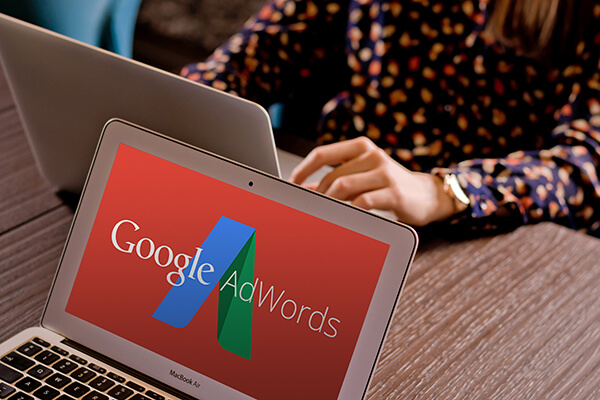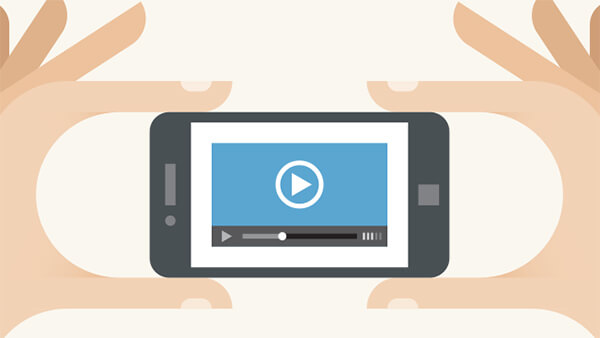Small business growth can come in a variety of ways. It can be increased sales or increased recognition; increased click-through rates (CTR) or increased conversions. The point being that if you’re looking for hacks to grow your small business, you’ve come to the right place. Keep on reading for 10 hacks that will not only prepare you for 2017, but also for growth in 2017.
1: Mobile Optimization
Starting off this list is something you’ve heard time and time again: optimize for mobile. No matter how many times you stumble across this phrase (it’s literally everywhere online), it’ll never not be true, hence its place at the top of this list. This top placement is also aimed at increasing awareness of something else, responsive website designs. Let’s get a quick statistic out of the way before we continue: 85% of sites are mobile-friendly. Okay, some of you may be thinking, “hey, isn’t mobile-friendly the same as a responsive site?” No, it is not. While 85% of sites are mobile-friendly, not all are responsive. You see mobile-friendly is the bare minimum to pass Google’s new mobile-first search indexing (check out this blog post for more information on that). A mobile-friendly site is basically a slimmed down desktop site that works on mobile devices. If your goal is to not only pass Google’s test, but to also increase your audience’s mobile experience (and increase conversions), go for a responsive site design. This design reformats and restructures the site content for ANY device, leading to a pleasant experience ripe for a sale.

2: Mobile Advertising
After you’re optimized for mobile, it’s time to advertise. Fact: 80% of Internet users own a smartphone (probably more now, actually). Fact: people are spending more time on mobile devices than desktops. What does this tell you? It tells you that it’s time to divert some funds away from traditional advertising and focus them on mobile advertising. The reality is that if people are spending more time looking at their phones than anything else, and your goal is to grow your business by making more sales, you have to make sure to have a presence in the place where people are spending their time. Before you begin, look over this post that’ll help you decide which mobile ad format is best for you.

3: Mobile Applications
I’d wager that one of the most prevalent small business marketing trends 2017 will bring is the use of mobile applications by small businesses. For starters, does your competition have a mobile app? They do? Well then, it’s time to catch up and compete. If they don’t, then you want to take this as an opportunity to get the upper hand and do better than them. A mobile app for your small business can be a powerful marketing tool that allows for increased engagement and visibility, higher revenue, and faster growth. If you’re still not convinced, take a look at these statistics from PR Newswire that might do the trick:
- Shoppers browse 286% more products on mobile apps than mobile web, leading to an add-to-cart rate 90% higher than mobile web
- Conversion rates on apps are 120% higher than mobile web
- Mobile commerce accounts for 35% of retail eCommerce sales worldwide and 50% in the US
4: Voice Search Optimization
It’s predicted that by 2020, 50% of all searches will be done by voice. Voice search is like automatic typing. It’s partly AI in nature and emphasizes intent and contextual meaning to improve search accuracy. Voice search is also changing the SEO game for all businesses, but more so for small businesses. More often than not, local search is of importance to small businesses because people who search locally are the ones that will visit them. It just so happens that voice search is oftentimes used for local searches as well. Therefore, because voice and local search are closely intertwined, optimizing for one is also helpful for the other. This means that you’ll have to start optimizing for voice search in your marketing plans. As it was, SEO consisted of shorthand phrases and keywords. That was then. Now, you have to think, “how are my customers going to search?” This leads to the conclusion that instead of searching, “digital agency NYC,” people will be searching, “what’s the best digital marketing agency for small business in NYC?” The takeaway is that you have to start thinking of your SEO strategy with long-tail keywords in mind that focus on “who,” “what,” “where,” “when,” “why,” and “how.” For further reading on optimizing for voice search, read over this post.
5: Video
Let’s begin this section with some stats provided by HubSpot:
- 87% of online marketers use video content
- 96% of B2B organizations use video in some capacity in their marketing campaigns, of which 73% report positive results to their ROI
- Including a video on a landing page increases conversions by 80%
- After watching a video, 64% of users are more likely to buy a product online
Videos are an excellent way of promoting your brand because they’re attention-grabbers. More than an image or post, videos communicate information in a medium that isn’t tedious, but instead entertaining. Videos also need not be ads, but enjoyment of video ads does increase purchase intent by 97% and brand association by 139%. So take that into consideration when tailoring your 2017 growth strategy.

6: Live Video
Another one of the business trends that will grow in 2017 is live video. 2016 saw its rise and introduced Instagram Live into our lives. Live video is different from normal video in a couple ways. Yes, one is live and the other isn’t, but more importantly, live video is exclusive. It evokes that feeling of FOMO (fear of missing out) that makes us inclined to tune in until the end of the broadcast. For this reason, live video is an excellent way of branding your business and letting your audience know that you’re modern, caught up with the times, and ready to enter their lives in a medium they like. More than that, going live opens up your marketing strategy and takes it to a whole new level. Interviews and Q&A sessions take a new meaning as the option for real-time audience input is added. Product demos are even more exclusive because they’re not pre-recorded 10 times until they’re perfect, they’re happening right then and there. In other words, it’s raw and unfiltered, and people like that.
7: Social Media
We spend nearly 20% of our time online on Facebook, there are 1.65 billion active mobile social accounts globally with 1 million new active mobile social users added every day, and 78% of people who complain to a brand via Twitter expect a response within an hour. These statistics are telling us that we spend a majority of our time on social media, social media usage is growing, and people are increasingly turning to social media as a form of customer support. This, in turn, tells us that utilizing social media is a good way of promoting your business and keeping customers happy.

8: Email Marketing
Emails ensure that you’re a constant presence on your consumers’ minds (as long as you don’t overuse that ‘send’ button and drown them with a constant barrage of messages). If you’re not including them in your marketing campaigns, do it right now. Even if it’s just an automated email, it’s been found that on average, automated emails gt a 70.5% higher open rate and 152% higher CTR than ‘business as usual’ marketing messages. More than that, companies who send automated emails are 133% more likely to send relevant messages that correspond with a customer’s purchase cycle. Emails can also be combined with other strategies to improve conversions and get that CTR up. As a matter of fact, videos in emails actually lead to a 200-300% increase in CTR.
If you really want to increase conversions, personalize that email. Your customers are not faceless droids who live to buy your product; they’re people with names. Just adding a name in the body can increase your CTR by 14%, conversions by 10%, and give you 6-times as many transactions than the alternative.
9: Blog Outreach
Ahh, blogs. Chances are good that you’re reading this very post on a blog. But “how can a blog help my small business grow,” you ask? One word (really three though): SEO. That’s actually only one way in which a blog can help your business grow, but it’s quite important. Blog posts are an excellent way of utilizing keywords that people are searching for, adding backlinks to your site that will increase your rank with search engines like Google, and giving your site more authority with said search engines (especially if you syndicate content with larger, more popular site).
Keeping an updated blog also gives your audience a reason to keep coming back to your site. A good idea is to create a content calendar with set posting dates and posting sites so that you never fall behind on a post. You can also tailor these posts around holidays to give them an extra engagement boost.
10: Local SEO
We briefly touched on local SEO earlier, and now it’s time to dive in. Because of its geographic component, local SEO evens the playing field for small businesses and those who are spending top-dollars for keywords. In case you didn’t know, this is because local searches can land you higher than organic searches (yay!!!!). To get this added boost, make sure to have the SAME information on all of your online listings (name, address and number), that you have a listing with Google (no, a website is not a listing) on the Google My Business page, and that you have your location included in all of your landing pages, URLs, title tags (e.g. Aumcore – Digital Marketing Agency NYC), meta tags and descriptions. And for those who were wondering, here’s what determines your local search rankings:
- Relevance: How well your listing matches a local search. If you own a deli you’re not going to appear when someone searches for a pizzeria..
- Distance: How far your location is from the local search term. Your NYC coffee shop won’t appear when someone searches for a coffee shop in Boston.
- Prominence: How well known your business is.
Wrapping Up
Use this post as a guide for things you can add to your existing growth strategy. Of course, you can go to a digital agency that will take care of things for you, but for those who are inclined to a DIY lifestyle, here’s a quick wrap-up of what we just covered:
- Mobile Optimization
- Mobile Advertising
- Mobile Applications
- Voice Search Optimization
- Video
- Live Video
- Social Media
- Email Marketing
- Blog Outreach
- Local SEO




